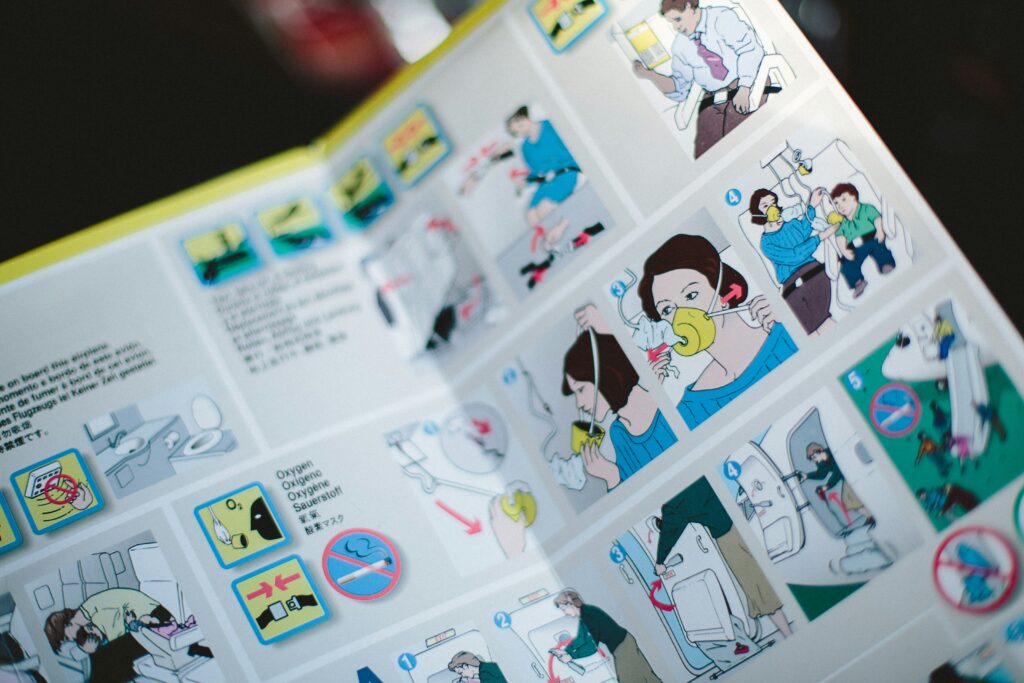In the aviation sector, safety is the highest priority for both employees and customers. Risk management is at the core of operations, and Safety Management Systems (SMS) are now standard in the airline industry. This article explores the core competencies in safety management within airlines and provides useful insights for anyone interested in the subject or flying as a passenger.
1. An Organization’s Safety Management Systems (SMS)
Definition and Importance
An SMS is a structured model that involves safety within an organization’s framework and supports the airline’s safety rules and requirements. According to the International Civil Aviation Organization (ICAO), SMS encompasses four key components: protection, risk management, risk assessment, and safety promotion.
Components:
- Safety Policy: A written statement endorsing safety across the organizational hierarchy of the airline.
- Safety Risk Management: Activities to assess and reduce risks, along with procedures related to these activities.
- Safety Assurance: Comprehensive and systematic inspections and analysis of safety performance to ensure that safety measures are efficient and strictly followed.
- Safety Promotion: Promoting organizational safety through communication, discussions, training, and education.
2. Regulatory Compliance
Adherence to Aviation Standards
Airline companies must meet regulatory measures set by national and international legislation sources like the FAA and EASA. These regulations ensure that airlines provide a required level of safety for their customers.
Regular Audits
Compliance is checked through audits and inspections that encompass organizational and maintenance activities. These audits help identify vulnerable areas and suggest improvements.
3. Training and Development
Comprehensive Training Programs
Flight crews must undergo recurrent training to stay updated on safety practices, drills, and equipment handling. These training sessions also involve acquiring knowledge of the organization’s operations and simulated emergency scenarios.
Use of Flight Simulators
Flight simulators are used to prepare pilots for various emergency situations, allowing them to practice handling emergencies in a controlled environment. This practical experience increases confidence and competence during real emergencies.
4. Incident Reporting and Investigation
Establishing a Reporting Culture
A non-punitive environment encourages employees to report safety incidents, near-misses, and unsafe conditions. This openness is crucial for discovering problems before they escalate.
Thorough Investigation Processes
Accidents are analyzed to identify underlying causes. Investigations involve gathering evidence, interviewing staff, and examining working procedures. Recommendations based on findings help prevent future occurrences.
5. Fostering a Safety Culture
Understanding Safety Culture
Safety culture refers to the perception of safety within an organization, where information is freely exchanged, and all parties are mutually respected. Leadership commitment is crucial for nurturing this culture.
Employee Involvement
When employees actively engage in safety discussions and participate in safety programs, the entire organization becomes committed to safety. Safety meetings, training sessions, and briefings reinforce awareness and promote proactive safety measures.
6. Risk Assessments and Control
Continuous Risk Identification
Airlines use various tools to identify risks related to operations, including safety audits, hazard identification workshops, and employee suggestions.
Implementing Mitigation Strategies
Once risks are identified, airlines create action plans to mitigate them. This may involve changes to operations, enhanced training, or acquiring new equipment.
7. Emergency Response Planning
Crisis Management Protocols
Programs are designed to help airlines respond to crises, such as technical mishaps, security threats, and natural disasters. These plans outline specific procedures, individual responsibilities, and communication methods.
Training for Emergency Scenarios
Drills and simulations prepare staff to handle emergencies effectively. Training improves collaboration within the organization and ensures coherent responses during a crisis.
8. Monitoring Safety Performance
Key Performance Indicators (KPIs)
Safety KPIs, such as incident rates, audit outcomes, and regulatory compliance levels, help airlines monitor their safety performance and identify areas for improvement.
Data-Driven Decision Making
Airlines gather and analyze safety performance data to make informed decisions about investments and improvements in safety operations.
9. Internal Communication and Collaboration
Internal Communication Strategies
Communication about safety concerns should be open, allowing employees to express their thoughts without fear of punishment.
Collaboration with Authorities
Airlines maintain strong relationships with regulatory authorities and institutions to set safety standards and promote best practices in aviation safety.
10. Technological Advancements
Adopting New Technologies
Airlines continually incorporate new technologies, such as real-time data acquisition methods, equipment monitoring tools, and safety management systems, to improve safety operations.
Research and Development
Airlines collaborate with universities and technology firms to research and develop new safety technologies, further enhancing aviation security.
Conclusion
Occupational safety in aviation is a complex, systematic process involving prevention, regular updates, and improvements based on standards and regulations. By addressing these ten critical safety areas and increasing awareness of safety practices, airlines can improve passenger safety and confidence. To read more about aviation safety and industry practices, join the Kamranology newsletter.
Safe skies always!


This is a well-rounded and insightful piece on airline safety management. It effectively highlights the integration of technology, training, and culture in fostering a secure aviation environment. The emphasis on data-driven decision-making and proactive risk mitigation underscores a forward-thinking approach to airline safety. It serves as an excellent guide for industry professionals while also reassuring passengers about the rigorous measures in place to ensure their safety
Pingback: Sandboarding in 2025: Your Ultimate Guide to the Dunes